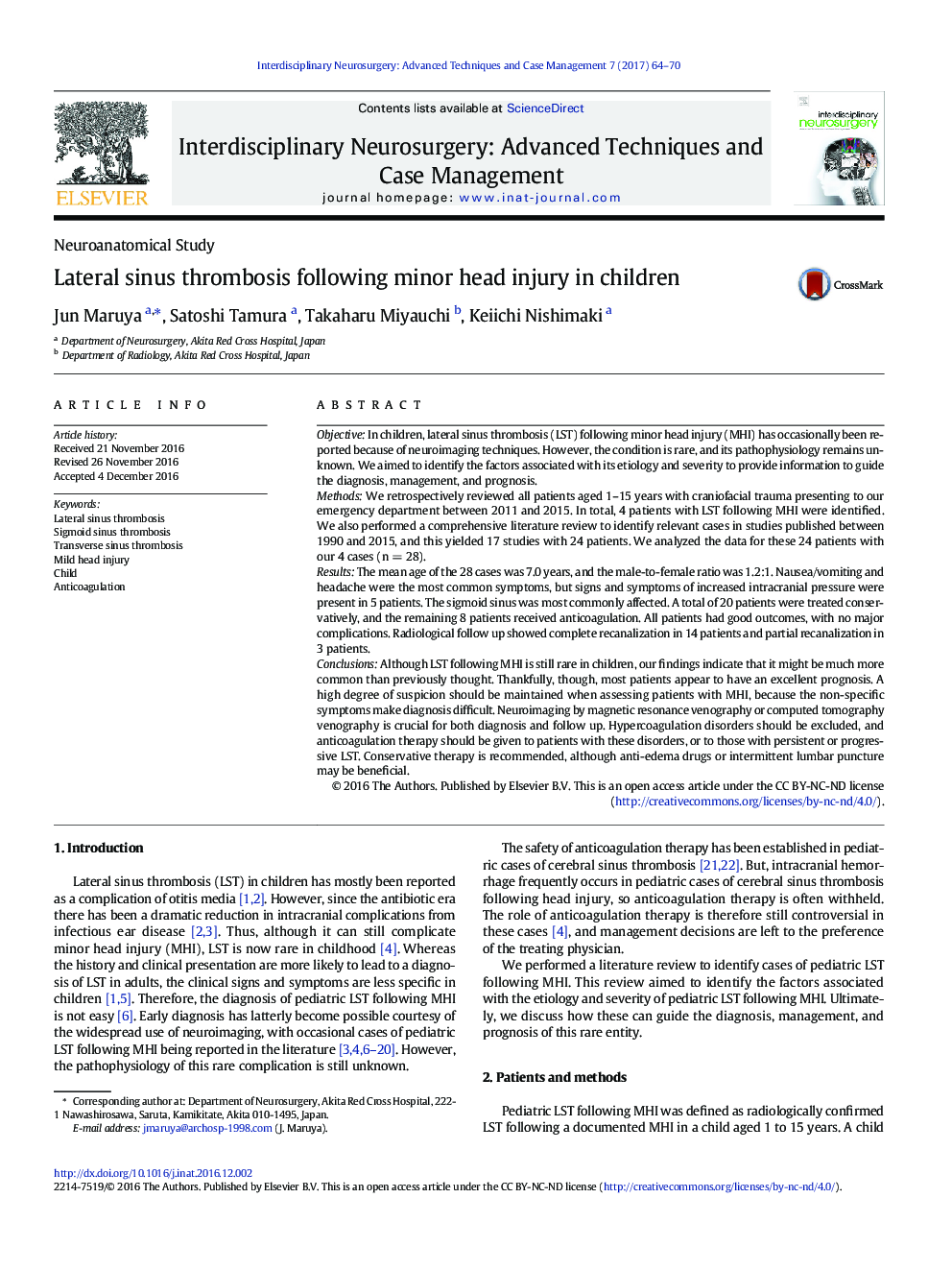| کد مقاله | کد نشریه | سال انتشار | مقاله انگلیسی | نسخه تمام متن |
|---|---|---|---|---|
| 5629492 | 1580209 | 2017 | 7 صفحه PDF | دانلود رایگان |
- Although it is still rare, it might be much more common than previously thought.
- Most patients appear to have an excellent prognosis.
- The diagnosis is difficult and a high degree of suspicion should be maintained.
- Neuroimaging is crucial for both diagnosis and follow up assessments.
- Conservative therapy with sufficient hydration is recommended for most cases.
ObjectiveIn children, lateral sinus thrombosis (LST) following minor head injury (MHI) has occasionally been reported because of neuroimaging techniques. However, the condition is rare, and its pathophysiology remains unknown. We aimed to identify the factors associated with its etiology and severity to provide information to guide the diagnosis, management, and prognosis.MethodsWe retrospectively reviewed all patients aged 1-15 years with craniofacial trauma presenting to our emergency department between 2011 and 2015. In total, 4 patients with LST following MHI were identified. We also performed a comprehensive literature review to identify relevant cases in studies published between 1990 and 2015, and this yielded 17 studies with 24 patients. We analyzed the data for these 24 patients with our 4 cases (n = 28).ResultsThe mean age of the 28 cases was 7.0 years, and the male-to-female ratio was 1.2:1. Nausea/vomiting and headache were the most common symptoms, but signs and symptoms of increased intracranial pressure were present in 5 patients. The sigmoid sinus was most commonly affected. A total of 20 patients were treated conservatively, and the remaining 8 patients received anticoagulation. All patients had good outcomes, with no major complications. Radiological follow up showed complete recanalization in 14 patients and partial recanalization in 3 patients.ConclusionsAlthough LST following MHI is still rare in children, our findings indicate that it might be much more common than previously thought. Thankfully, though, most patients appear to have an excellent prognosis. A high degree of suspicion should be maintained when assessing patients with MHI, because the non-specific symptoms make diagnosis difficult. Neuroimaging by magnetic resonance venography or computed tomography venography is crucial for both diagnosis and follow up. Hypercoagulation disorders should be excluded, and anticoagulation therapy should be given to patients with these disorders, or to those with persistent or progressive LST. Conservative therapy is recommended, although anti-edema drugs or intermittent lumbar puncture may be beneficial.
Journal: Interdisciplinary Neurosurgery - Volume 7, March 2017, Pages 64-70
